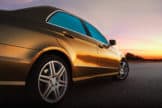
Types of Window Tint for Texas Summer Travel
For most San Antonio families, the Memorial Day weekend is a signal that school is (or soon to be) over and plans for a holiday road trip or Summer travel have begun. Maybe less so this year, but we can all still remain hopeful. And when we think of travel, preparing for the drive is half the battle. Simple maintenance, like changing the oil and checking tire pressure are a given. But what about safety and comfort? If you are considering window tint, then there are several things you should know. Window tint does block up to 99% of harmful UV rays and, with varying levels of heat rejection, reduces the temperature inside your vehicle. It also protects passengers from shattered glass in the event of an accident, and provides added privacy, which lessens the chances of theft. Not all window tints are the same, however, and have different characteristics that are suited to different types of vehicles. Depending on your budget and preference, each has its unique benefit. Here are four types to consider: Dyed Window Tinting Among all the types of tint film, dyed window tint is the least expensive. However, it should never be underestimated because it still blocks UV rays from the sun and hides your possessions inside your vehicle in broad daylight. The downside of using a dyed tint is fading over time, which means that it would need to be replaced. Dyed window tint blocks light rays by the addition of dye to the film. The dye is placed in a layer next to the adhesive, and then applied to the window. Solar heat is absorbed by the dye in the film, thus preventing some of the heat from entering through the window. Dyed window tinting film, however, is used primarily for appearance. From the outside, dyed film looks flat and opaque, providing some privacy while still permitting visibility from the interior. When used on the windows of your vehicle, it will appear black. The heat reduction provided by most varieties of dyed film is not particularly high, but they are a cost-efficient option for those on a budget. Metalized Window Tinting Like dyed film, metalized film keeps heat away from interior space by reflecting it away. This is done by very small metallic particles embedded in the film. The metallic content also strengthens the window, making the window much more shatter-resistant. And it is more resistant to scratches than dyed film. Metalized window tint film creates a shiny appearance from the outside. When used on a vehicle, however, one drawback of metallized film is the fact that its metallic content has a tendency to interfere with electronic devices, such as cell phone and GPS and radio transmission. The reflective properties may not be the look you want, as most tints have a matte finish. However, metalized window tints are still functional. Hybrid Window Tinting As what the name suggests, hybrid window tints are a combination of metalized and dyed window tint films. They are made to combine the positive qualities of both while eliminating its negative ones. For example, titanium grey dye is known for being not too dark nor too reflective. This kind of window tint provides the necessary amount of darkness to provide privacy while blocking a decent amount of UV rays. The initial piece of the window tint is an adhesive layer that adheres to the glass. Next, a dyed and metalized layer is incorporated into the film along with a protective top coat to prevent scrapes. Each film bonds together with the use of a laminating adhesive. Because of the dyed layer, hybrid film can block a fair amount of light, while its metallic parts create a crisp, dark appearance. With hybrid films, the commonly-held belief that “the darker the film, the more heat-resistant it is” no longer holds true. In fact, most people choose darker films simply because they provide the best privacy. Ceramic Window Tinting Ceramic film is the highest quality of window tint film, and also the most expensive, contains neither metal, dye, nor metal, but instead a kind of ceramic particle that is both non-conductive and non-metallic. Ceramic film is a relatively new option on the market, but has already proven its worth in terms of performance and reliability. Ceramic window tint film reduces the solar heat that enters through the windows in the form of infrared light, while allowing maximum visibility both by day and night. Like hybrid film, ceramic window-tinting film allows maximum efficiency in the functioning of radios, cell phones, GPS systems, and all other such devices being operated from inside the protected space. It surpasses the other types in its resistance to glare and fading, and renders windows highly shatter-proof. Ceramic film is also most effective in its blocking of ultraviolet light from the interior; in the case of ultraviolet light (the kind of light rays that contribute to sunburn and skin cancer), ceramic window-tinting film can block up to 99% from entering the interior. Ultimately, the decision is up to you, but we wanted to arm you with valuable information to help you make the right decision. Just make sure that you have your tint installed by a reputable business and that you are aware of the window tint laws in your state – each state has restrictions on allowable darkness for your vehicle. If you are looking for a high-quality window film, installed by certified professionals, then contact us for a quote today. Or if you still have questions, please view our window tint product pages to see our XPEL PRIME dyed, hybrid and ceramic offerings. Until then, safe travels, wherever the road may lead you.